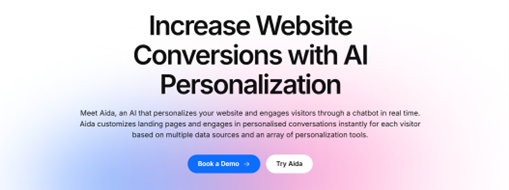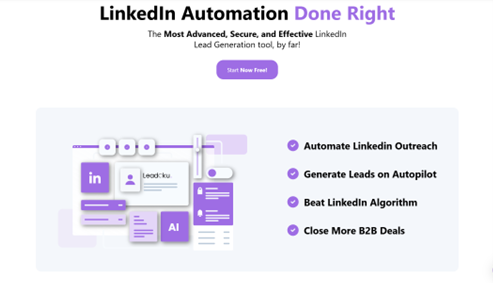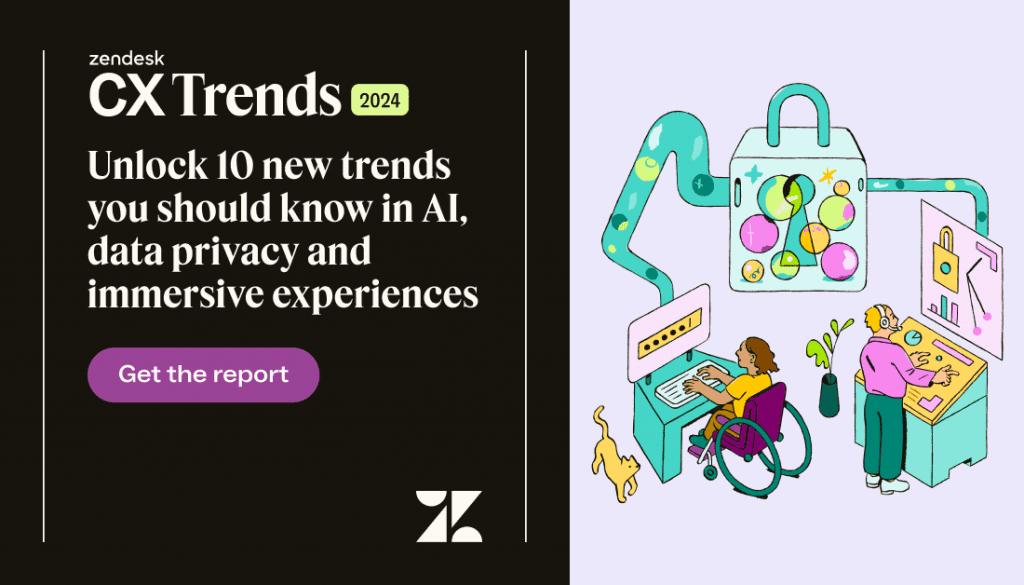Generative AI is no longer a buzzword—it’s a transformative technology reshaping industries from content creation to education and beyond. Unlike traditional AI systems that predict outcomes or automate tasks, generative AI has the ability to create. Whether it’s generating text, images, or even entire business strategies, this cutting-edge field is unlocking new possibilities for innovation.
Disclosure: If you click on my affiliate/advertiser’s links, I am going to receive a tiny commission. AND… Most of the time, you will receive an offer of some kind. It’ s a Win/Win!
In this article, we have an introduction to generative AI, its applications, and why businesses must pay attention. You’ll learn how generative AI content creation companies are redefining creativity, what makes it different from other AI models, and how tools like ChatGPT fit into the bigger picture. Plus, we’ll discuss why understanding business acumen skills is essential for leveraging these technologies effectively.
From startups to Fortune 500 companies, the rise of generative AI is undeniable. With giants like Amazon, Meta, and Apple investing heavily in generative AI applications, it’s clear this technology is here to stay. However, challenges like controlling its output and ethical concerns around its use remain critical topics of discussion.
So, whether you’re a project manager looking for an overview of generative AI, a professional exploring generative AI jobs, or simply curious about its potential, this guide will equip you with the knowledge to navigate this exciting field.
Enroll in the AI Product Manager Nanodegree Program for a comprehensive overview of AI and machine learning for business. You'll learn to build and train AI models, evaluate results, and measure success. Click HERE to get started NOW.
Table of Contents
1. What is Generative AI?
Defining generative AI and how it differs from other AI models.
2. Generative AI vs Predictive AI
Exploring the differences between predictive AI and generative AI and their respective use cases.
3. How Generative AI Works
Breaking down the mechanics of generative AI and tools like foundation models and LLMs.
4. Applications of Generative AI in Business
Highlighting how businesses use generative AI applications to innovate and grow.
5. Generative AI Content Creation Companies
Examining leading players in the field and their role in reshaping creative industries.
6. Generative AI and Business Acumen
Why business acumen skills are vital for successfully leveraging generative AI.
7. Challenges and Ethical Concerns in Generative AI
Addressing the challenges of controlling generative AI systems and the ethical implications.
8. Generative AI in Education
Exploring how generative AI is revolutionising learning and knowledge sharing.
9. Careers in Generative AI
An overview of generative AI jobs and skills needed to thrive in this industry.
10. The Future of Generative AI
Predicting trends and innovations in the generative AI landscape.
11. Summary and Conclusion: Generative AI—A Catalyst for Creativity and Innovation

1. What is Generative AI?
Generative AI is a groundbreaking branch of artificial intelligence designed to create new content, such as text, images, music, or even software code. Unlike traditional AI, which focuses on analysing data or predicting outcomes, generative AI is all about creation. It doesn’t just process information—it generates something entirely new based on patterns it has learned.
At its core, generative AI uses models like Generative Adversarial Networks (GANs) and Large Language Models (LLMs). These tools allow the AI to understand and replicate complex patterns, making it capable of producing anything from realistic images to human-like conversations.
For example, tools like ChatGPT—a well-known generative AI system—demonstrate how this technology can be used for customer support, content generation, and brainstorming. But generative AI isn’t limited to text. It’s also used in industries like fashion to design clothing, in gaming to create environments, and in healthcare to generate personalised treatment plans.
The definition of generative AI goes beyond just its capabilities; it’s also about its potential impact. By enabling businesses to innovate faster and more creatively, generative AI is reshaping industries worldwide. However, understanding its mechanics and limitations is crucial to using it effectively.
Actionable Tip: Explore tools like DALL-E for image generation or ChatGPT for text-based projects to understand how generative AI can benefit your business.
Start Your Business Today with Registered Agents Inc.
2. Generative AI vs Predictive AI
When comparing generative AI vs predictive AI, the difference lies in their goals and applications. Predictive AI focuses on analysing existing data to forecast future outcomes. For instance, a predictive AI system might estimate future sales based on past trends. Generative AI, on the other hand, creates entirely new content, like designing marketing materials or composing a new jingle for a brand.
This distinction is essential for businesses to understand. While predictive AI excels in decision-making and planning, generative AI thrives in creative processes and innovation. For example, while predictive AI might forecast market demand, generative AI can help create engaging product descriptions or marketing campaigns tailored to that demand.
However, these technologies aren’t mutually exclusive. You can combine them to gain both analytical insights and creative solutions. For instance, predictive AI can identify a target audience, and generative AI can craft personalised messages to engage them.
Actionable Tip: Assess your business needs. If you’re looking for creativity, explore generative AI applications. For data-driven insights, start with predictive AI tools.
3. How Generative AI Works
Generative AI relies on advanced models like GANs, LLMs, and foundation models. These systems are trained on vast datasets to identify patterns and produce new content. Let’s break it down:
1. Training Phase: The AI system analyses massive amounts of data, learning patterns, styles, and structures. For example, an AI trained on paintings will learn artistic styles like Impressionism or Surrealism.
2. Generation Phase: Using what it has learned, the system generates new content that resembles the patterns in the training data. This is how tools like ChatGPT craft human-like text responses.
3. Fine-Tuning: Businesses can customise generative AI systems to meet specific needs, such as creating brand-specific marketing copy or designing personalised customer experiences.
However, controlling the output of generative AI systems is critical. Without proper guidelines, the results might be biased, irrelevant, or even harmful. Tools like OpenAI’s moderation API help ensure that generated content aligns with ethical standards.
Actionable Tip: Start with tools like ChatGPT or DALL-E to experiment with generative AI. Use small projects to understand its capabilities and limitations.
4. Applications of Generative AI in Business
Generative AI isn’t just a futuristic concept—it’s being used in businesses worldwide to drive growth and innovation. Here are some key generative AI applications:
• Marketing: Create engaging ad copy, personalised emails, or even entire social media campaigns tailored to specific audiences.
• Product Design: Use generative AI to design prototypes, optimise product features, or explore new aesthetics.
• Customer Support: Deploy chatbots like ChatGPT to provide instant, AI-driven responses to customer inquiries.
• Content Creation: From blog posts to video scripts, generative AI helps businesses scale their content production effortlessly.
• Training and Development: Use generative AI tools to create interactive training modules or personalised learning paths for employees.
For example, startups are using generative AI to produce unique branding materials at a fraction of the cost of traditional methods. Established companies like Amazon leverage it for inventory management and personalised shopping experiences.
Actionable Tip: Identify repetitive or creative tasks in your business and test how generative AI can improve efficiency or output quality.
5. Generative AI Content Creation Companies
The rise of generative AI content creation companies is a testament to how businesses are embracing innovation to meet growing demands for high-quality, personalised content. These companies provide tools and services that simplify content generation while maintaining high-quality output across various industries.
1. Jasper AI
Jasper AI is a leader in AI-driven content creation, catering to businesses that need blog posts, marketing copy, or social media content. What sets Jasper apart is its ability to craft text that aligns with a brand’s tone, making it a favourite for content marketers and startups alike.
2. Writesonic
Writesonic has gained popularity for its user-friendly platform that allows businesses to create audience-specific content quickly. Its advanced features include long-form content generation and tools for ad optimisation, ideal for businesses with dynamic marketing needs.
3. OpenAI’s ChatGPT
ChatGPT continues to dominate as a versatile generative AI tool. From drafting customer support scripts to creating personalised product recommendations, this tool showcases how generative AI applications can seamlessly integrate into everyday business
4. Synthesia: AI-Powered Video Creation
When it comes to video content, Synthesia stands out as one of the most innovative tools in the generative AI space. This platform allows businesses to create professional-grade videos in minutes by using AI-generated avatars and voiceovers. Companies often use Synthesia for training videos, marketing content, or product demonstrations. It eliminates the need for expensive video shoots, saving both time and resources.
5. Canva Pro: Generative AI for Design
Canva Pro has embraced generative AI to simplify design processes. Whether you’re creating social media graphics, presentations, or branding materials, Canva’s AI features can generate templates, colour schemes, and even suggest design elements. It’s particularly valuable for small businesses and entrepreneurs who lack in-house design teams.
While tools like Canva Pro offer advanced design capabilities, there are also more affordable options for businesses just starting with generative AI content creation. Ryter AI and Rytr provide intuitive, cost-effective solutions that cater to small businesses and freelancers looking for high-quality content creation on a budget. Here’s what makes these tools stand out:
6. Ryter AI: Simplifying Content Creation for Businesses
Ryter AI is a powerful generative AI tool designed to assist businesses in creating high-quality written content quickly and efficiently. Known for its intuitive interface and versatile features, Ryter AI caters to a wide range of content needs, from blog posts to marketing emails, making it a favourite among startups and small businesses.
1. Streamlined Content Generation
Ryter AI allows users to generate professional-grade content with minimal input. Simply provide a brief description or keyword, and the tool creates tailored content that aligns with your goals. Its algorithm ensures that the tone and style fit your brand voice, saving time and effort in editing.
2. Versatility Across Industries
Whether you’re in e-commerce, real estate, or tech, Ryter AI adapts to various industries. For instance, an e-commerce store can use Ryter AI to craft compelling product descriptions, while a tech company can generate engaging technical blog posts.
3. Collaborative Features
Ryter AI offers collaborative tools, making it ideal for teams. Multiple users can contribute to the same project, allowing marketing and design teams to work together seamlessly on content campaigns.
4. Affordability
Compared to some competitors, Ryter AI is budget-friendly, making it accessible to small businesses and freelancers who are just starting their journey in content marketing.
5. Integration with Other Tools
Ryter AI integrates with platforms like WordPress and Google Docs, enabling users to streamline their workflows and publish content directly to their preferred platforms.
Ryter AI is a practical solution for businesses that need fast, high-quality content without the complexity of advanced AI tools. Its user-friendly design and competitive pricing make it an excellent choice for those looking to dip their toes into generative AI applications.
Actionable Tip: Start with Ryter AI’s free trial to explore its capabilities and identify how it can complement your existing content strategy.
7. Rytr: Affordable and Efficient AI Content Creation
Rytr is another popular generative AI tool designed to make content creation accessible, especially for small businesses, startups, and individual creators. With its focus on affordability and ease of use, Rytr helps businesses produce high-quality written content quickly and efficiently.
1. Affordable Content Solutions
Rytr stands out for its cost-effectiveness, offering plans that are significantly cheaper than many of its competitors. This makes it an excellent choice for freelancers or small businesses that want to explore generative AI content creation without committing to a high-budget tool. It even comes with a FREE plan!
2. Wide Range of Use Cases
From blog writing to crafting ad copy, Rytr supports a diverse range of content types. It’s particularly useful for creating social media captions, email newsletters, and even SEO-focused content, thanks to its integration of relevant keyword suggestions.
3. Intuitive User Interface
Rytr’s straightforward interface ensures that even users with minimal tech experience can generate quality content effortlessly. Its simplicity allows you to start creating immediately, reducing the learning curve often associated with AI tools.
4. Language Versatility
With support for over 30 languages, Rytr is an excellent choice for businesses looking to create content for global audiences. Whether you need articles in English, Spanish, or Mandarin, Rytr can cater to multilingual requirements.
5. Tone and Style Customisation
Rytr offers a variety of tones, from formal to conversational, allowing businesses to tailor content to their audience. For instance, a law firm might opt for a professional tone, while a lifestyle brand can choose a friendly and casual style.
6. Team Collaboration Features
Similar to other tools, Rytr allows for team collaboration, making it ideal for marketing teams working on multiple campaigns. Users can share projects, provide feedback, and finalise content collaboratively within the platform.
Rytr combines affordability with versatility, making it a strong competitor in the generative AI content creation space. Its simplicity and robust features provide a great entry point for businesses looking to adopt AI-driven content strategies.
Actionable Tip: Take advantage of Rytr’s free tier to test its capabilities, especially for smaller projects like social media posts or email campaigns.
8. Adobe Firefly
Adobe’s Firefly offers generative AI capabilities integrated into its suite of creative tools like Photoshop and Illustrator. It enables users to generate images, textures, and animations with simple text prompts. For example, a marketing team could create campaign visuals in a fraction of the time it would take using traditional methods.
These companies showcase how generative AI applications are revolutionising creative workflows, empowering businesses of all sizes to produce high-quality content quickly and efficiently.
Actionable Tip: Experiment with these tools on small projects, like creating a promotional video or designing an ad campaign, to understand their potential for your business.
Automate your meeting notes. Fireflies.ai helps your team transcribe, summarize, search, and analyze voice conversations.
6. Generative AI and Business Acumen
Pairing business acumen skills with generative AI is essential for maximising its potential. Technology alone can’t guarantee success—leaders must know how to integrate it strategically into their operations.
1. Opportunity Identification
Generative AI opens up countless possibilities, but not all of them will align with your business goals. Leaders with strong business acumen can pinpoint the areas where AI will have the most significant impact, such as improving customer experiences or optimising workflows.
2. Strategic Decision-Making
Implementing generative AI requires investments in tools, training, and infrastructure. Business leaders must weigh these costs against potential returns, using their acumen to prioritise initiatives that offer the highest value.
3. Ethical Considerations
Using AI responsibly is a critical aspect of business acumen. Whether it’s addressing bias in AI outputs or ensuring customer data privacy, leaders need to consider the ethical implications of their AI strategies (see “The Business Case for Ethical AI” for more on ethics in AI).
4. Collaboration Between Teams
Generative AI is most effective when multiple departments collaborate. For example, marketing, design, and product development teams can work together to use tools like Jasper or Canva for cohesive branding efforts.
Actionable Tip: Use generative AI to automate repetitive tasks, freeing up your team to focus on strategic, high-value activities.

7. Challenges and Ethical Concerns in Generative AI
While generative AI offers transformative potential, it also comes with challenges that businesses must address to use it responsibly.
1. Algorithmic Bias
Generative AI systems often reflect the biases present in their training data. This can lead to outputs that reinforce stereotypes or exclude certain groups. For example, an AI model trained on biased hiring data could perpetuate discrimination. (See “How to Overcome Biases in Business Decision Making“.)
2. Intellectual Property (IP) Issues
Determining who owns AI-generated content can be tricky. For instance, if a generative AI tool creates a marketing slogan or image, does the business, the AI developer, or the user own the rights? These legal grey areas need to be clarified to avoid disputes.
3. Misinformation Risks
Without proper oversight, generative AI can produce misleading or incorrect information. This is especially risky in industries like healthcare, where accuracy is critical.
4. Ethical Dilemmas
Deepfake technology, enabled by generative AI, raises significant ethical concerns. While it can be used creatively in entertainment or marketing, it also poses risks for spreading misinformation.
5. Controlling Outputs
Ensuring that generative AI systems produce relevant, accurate, and appropriate content can be challenging. Businesses must regularly audit and fine-tune their AI tools to align with organisational values and objectives.
Actionable Tip: Create internal guidelines for generative AI use that address bias, privacy, and ethical considerations. Regularly review AI outputs to ensure they meet these standards.

8. Generative AI in Education
Generative AI applications in education are transforming how students learn, educators teach, and institutions manage resources. This technology enables personalised learning experiences and reduces administrative burdens, making education more accessible and effective.
1. Customised Study Materials
Generative AI can create personalised study guides, quizzes, and flashcards tailored to individual learning styles. For example, a student struggling with algebra might receive targeted practice problems generated by AI tools.
2. Interactive Learning Tools
ChatGPT-powered virtual tutors provide real-time assistance, answering students’ questions and explaining concepts in an interactive, engaging way. This is particularly beneficial for distance learners or students needing extra support.
3. Content Creation for Educators
Educators can use generative AI to prepare lesson plans, lecture notes, and even multimedia presentations. Tools like Canva Pro and Synthesia simplify the process of creating visually engaging content.
4. Automating Administrative Tasks
AI can automate grading, attendance tracking, and other administrative duties, freeing up educators to focus on teaching and mentoring students.
5. Language Learning
Generative AI applications like ChatGPT are also proving invaluable for language learners. They simulate real-life conversations, helping users practice vocabulary, grammar, and pronunciation in an interactive environment.
Actionable Tip: Schools and universities can start by integrating generative AI tools into non-critical areas, such as supplemental learning resources, before expanding their use to core academic programs.
Unleash the Power of Learning with our Edureka’s Master Courses. Click HERE for more info.
9. Careers in Generative AI
The rise of generative AI has created a wealth of opportunities for professionals across industries. From technical roles to creative positions, the demand for expertise in this field is skyrocketing.
1. Technical Roles
Jobs like AI engineers, data scientists, and machine learning specialists are at the forefront of generative AI applications. These roles focus on developing and fine-tuning AI models, such as GANs and LLMs. Companies like OpenAI, IBM, and Google often seek experts in these areas.
2. Creative Roles
Generative AI has opened doors for creative professionals to collaborate with AI systems. Roles like content creators, video editors, and graphic designers now include using AI tools to streamline workflows and enhance creativity.
3. Business-Focused Roles
Positions like AI project managers or AI ethicists are emerging to oversee the implementation of generative AI in business settings. These roles require a mix of technical knowledge and business acumen skills.
4. Academic and Research Opportunities
For those interested in advancing the field, universities and research institutions offer roles in studying the ethical implications, applications, and limitations of generative AI.
Actionable Tip: Explore certifications like “Career Essentials in Generative AI by Microsoft and LinkedIn” to build relevant skills and improve employability in this growing field.
10. The Future of Generative AI
As we look ahead, the future of generative AI is as exciting as it is unpredictable. This technology is evolving rapidly, with innovations shaping the way businesses and individuals interact with AI.
1. Greater Accessibility
Generative AI tools are becoming more user-friendly, enabling even non-technical users to leverage their capabilities. This trend will make AI a staple in businesses of all sizes.
2. Enhanced Collaboration Between AI and Humans
Rather than replacing human creativity, generative AI will increasingly complement it. Tools like Canva and Synthesia demonstrate how humans and AI can work together to produce exceptional results.
3. Ethical and Regulatory Advances
With growing concerns about the misuse of generative AI, we can expect stricter regulations and clearer guidelines to ensure ethical practices.
4. Industry-Specific Applications
From healthcare to entertainment, generative AI applications will become more tailored to specific industries, unlocking unprecedented opportunities for innovation.
5. New Business Models
Startups focused on generative AI are likely to emerge as significant players, offering specialised solutions for industries ranging from education to retail.
Actionable Tip: Stay updated on generative AI trends through blogs, conferences, and online communities to remain competitive in this ever-evolving field.

11. Summary and Conclusion: Generative AI—A Catalyst for Creativity and Innovation
Generative AI is more than a technological advancement; it’s a catalyst for creativity, innovation, and transformation. By enabling businesses to create, adapt, and innovate like never before, generative AI is reshaping industries and redefining possibilities.
In this article, we explored what generative AI is, its differences from predictive AI, and how it works. From content creation companies to its applications in education and business, the potential of generative AI is immense. However, with great power comes great responsibility. Addressing ethical concerns and controlling the output of generative AI systems are challenges we must tackle collectively.
Whether you’re a business leader, a creative professional, or a tech enthusiast, the opportunities in this field are boundless. The future of generative AI is bright, but it’s up to us to harness its potential responsibly. As the Chinese saying goes, “The best time to plant a tree was 20 years ago. The second-best time is now.”
So, what’s your next step? Will you explore tools like ChatGPT or DALL-E? Jump into generative AI jobs? Or implement business acumen skills to integrate AI into your organisation? Whatever your choice, the time to embrace generative AI is now!
- How Live Shopping Can Skyrocket Your Small Business Sales: The Ultimate Guide to Getting Started
- Turn AI Anxiety into Competitive Advantage: How to Future-Proof Your Workforce for the AI Revolution
- Unlock Profit: Calculate Customer Lifetime Value & Maximize Growth
- Creating a Customer Persona: A Step-by-Step Guide On How To Do It
- Unleashing the Power of Digital Signage: The Best Software to Transform Your Business








thanks for sharing this
Absolutely fascinating! This article does a brilliant job of highlighting how generative AI is reshaping both business and creative industries. It’s incredible to see how AI can unlock new possibilities for innovation, efficiency, and personalized experiences. I’m excited to see where this technology takes us in the future—definitely a game-changer for anyone looking to stay ahead in their field. Thanks for sharing these insights!”